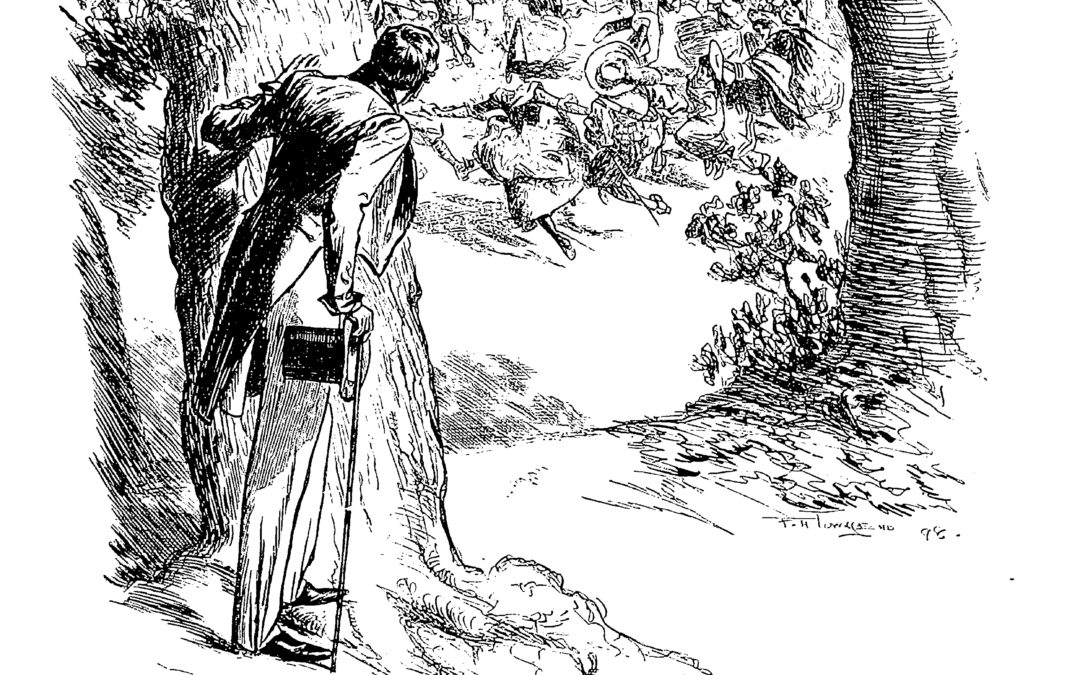Hawthorne’s memories of Brook Farm were a childish and boisterous masquerade picnic party for a six-year-old boy. Hawthorne refused to participate and “lay under the trees and looked on.” A decade later, Hawthorne refashioned this party an unpleasant “satanic” masquerade picnic for The Blithedale Romance.”
Hawthorne refashioned a birthday picnic when he was a member of Brook Farm to a “satanic” picnic for The Blithedale Romance in 1852. A decade earlier, the picnic was a masquerade party for a six-year-old boy. Through a veil of memory and imagination, the fictive Blithedale picnickers are wild drunken masqueraders dancing to satanic fiddle music The protagonist Miles Coverdale hides behind a tree looking aghast at friends dressed as Diana, Jim Crow, allegorical figures from the Faerie Queen, Puritans, shepherds from Arcadia, Revolutionary officers, Molly Pitcher, and a witch of Lynn with a broomstick in hand,” they” joined hands in a circle, whirling round so swiftly, so madly, and so merrily, in time and tune with the Satanic music, that their separate incongruities were blended together, and they became kind of entanglement that went nigh to turn one’s brain with merely looking at it.”
Discovered, Coverdale runs away as if he were “a mad poet hunted by chimeras.” “Miles Miles Miles Coverdale, where are you?” they cried. “Zenobia Queen Zenobia! Here is one of your vassals lurking in the wood. Command him to approach and pay his duty!”
The fantastic rabble forthwith streamed off in pursuit of me, so I was like a mad poet hunted by chimeras. Having fairly the start of them, however, I succeeded in making my escape, and soon left their merriment and riot at a good distance in the rear.
At Brook Farm, Hawthorne noted the picnickers were served a “cold collation of cakes and fruit.” There must have been milk and lemonade for both the children and the adults, who were public teetotalers and private tipplers. At Blithedale, Hawthorne merely says that there was a banquet set out on the grass, but judging from the masqueraders’ behaviour, there were alcoholic beverages, too.
*Founded in 1841, Brook Farm was a utopian commune in West Roxbury within Boston’s walking distance. It was based on Charles Fourier’s social philosophy and required its members to share the work of farming and its bounty. Emerson, who refused to join, sniped that it was “a perpetual picnic,” a French Revolution in small, an Age of Reason in a patty-pan.”
Featured Image: F.H. Townsend’s illustration’s caption is “Went nigh to turn one’s brain with merely looking at it.” The Blithedale Romance (1899).
See Nathaniel Hawthorne. The Blithedale Romance. Boston: James T. Fields, 1852; Sophia Hawthorne, editor. Passages From The American Note-Books of Nathaniel Hawthorne. Boston: Houghton, Mifflin & Co, 1868; Ralph Waldo Emerson. “Historic Notes of Life and Letters in New England” (1867c.), http://transcendentalism-legacy.tamu.edu/ideas/brhistory.html

